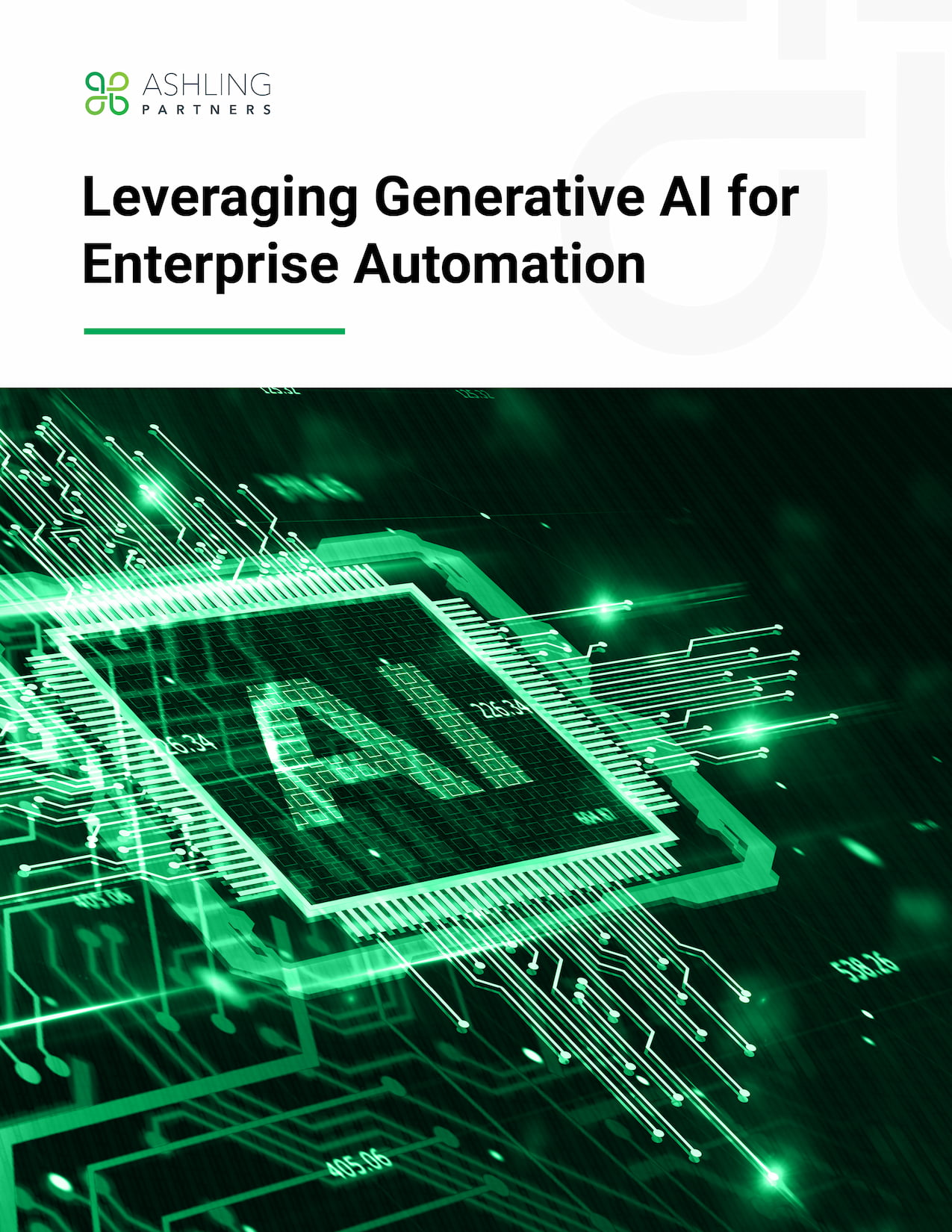Chapter 2
The Opportunities and Challenges of Generative AI for the Enterprise
In your evaluation of Generative AI for the enterprise, you’ll want to do your due diligence. Here are some opportunities and challenges to consider
The Opportunities of Enterprise Generative AI
This smart and sophisticated technology can drive many benefits for an organization, including in these areas:
Supercharged Content Creation
Generative AI accelerates content creation. It can generate a nearly infinite range of content across a wide variety of formats, including text, images, video, and more. By working from accurate and relevant prompts—and further honing those prompts to shape outputs after the initial content results—you can scale content creation within an enterprise.
Boosted Employee Productivity
Another substantial advantage of Generative AI in business is its capacity to be a super-powered AI assistant. Employees can be significantly more productive, saving them considerable time in their workdays to focus on meaningful work.
A McKinsey report labeled Generative AI “the next productivity frontier.” Its insights concerning productivity include:
- Generative AI’s impact on productivity could add trillions of dollars in value to the global economy ($2.6-$4.4 trillion).
- Generative AI could change the anatomy of work and be a true companion or augmenter for workers when automating processes.
- Labor productivity growth could increase from 0.1-0.6 percent annually through 2040 with the support of Generative AI. Combining it with other technologies could add up to 3.3 percent annually.
Integration with Other Technologies
In addition to profoundly affecting productivity, Generative AI and other technologies could expand the capabilities and impact of automation with plugins. For example, ChatGPT with a LinkedIn plugin could produce content for posts on the social media site.
Another integration use case would be Generative AI and Machine Learning algorithms working together to unlock more analytics insights. Enterprises have massive amounts of data they want to analyze and turn into actionable insights. Algorithms are great at performing tasks related to optimization, such as predictive modeling. These techniques focus on identifying patterns and making predictions, but they can’t generate new ones—which is what GenAI can add to the field.
Generative AI can recognize patterns and then deliver new content, mimicking the data from which it was trained. The progression here comes from knowing what something is and being able to create something new that still follows those same patterns.
The Challenges of Enterprise Generative AI
Generative AI presents exciting opportunities for organizations. However, it is still an immature technology, and as such, some elements of it give the industry pause.
Human Intervention Is Still Necessary
At an enterprise level, companies have concerns about what Generative AI will create, especially for public-facing content or anything related to legal, compliance, or regulatory materials. As a result, there’s still a great need for human intervention in the process. A review of content for accuracy and appropriateness is still necessary in order to build trust and prevent any costly errors.
Early feedback about GenAI in the enterprise space has revealed limitations that signal the need for human intervention for the foreseeable future, including:
- Generative AI can produce confident statements that don’t align with training data.
- The data it consumes has inherited bias, similar to any learning model.
- Generative AI lacks human reasoning, which is critical in decision-making.
- The current context window is narrow with only a few thousand words for the input and the output.
It comes down to Generative AI not being a 100 percent trustworthy or reliable source. However, there are ways to navigate this with a human review of the output.
Ungoverned Internal Data and Intellectual Property Sharing Are of Concern
For an enterprise to reap the rewards of Generative AI, internal data and intellectual property would need to be part of the inputs. There’s genuine fear about sharing it with these Generative AI engines in an ungoverned manner.
For example, a developer could provide ChatGPT with a small piece of custom code to help identify a bug. By doing so, the employee may not realize this code is now part of the LLM training dataset. That means the code is now part of the public domain, and competitors can find it—or, worse, cybercriminals could use it to discover and take advantage of vulnerabilities in software.
What Generative AI Produces Isn’t Exactly ‘New’
Most Generative AI tools run on LLMs. Their training requires terabytes of existing data. Therefore, the output from the tool isn’t entirely original, raising valid concerns about plagiarism and copyrights. There has already been plenty of backlash in higher education about the plagiarism aspect in particular, which has led to the use of tools that can detect ChatGPT content.
For businesses, the problem is a bit more complicated. Legally speaking, there are arguments on both sides involving AI ethics considerations and no existing legal precedent. Avoiding these legal entrapments hinges on the content not completely regurgitating what already exists.
Future Regulatory Rules Could Halt Enterprise-Wide Generative AI Adoption
Another potential problem is the possibility of industry-specific or governmental regulations surrounding Generative AI coming into effect. Highly regulated verticals such as healthcare and finance will have to be especially aware of these rules. Otherwise, it could prevent initiatives from moving forward. Proper research is a wise precaution before making substantial investments in these programs.
Despite these risks, Generative AI could be a highly effective productivity tool with the proper enterprise guardrails in place.
You now know the opportunities and challenges of Generative AI for enterprise use. Let’s see how Generative AI for the enterprise intersects with enterprise automation.

